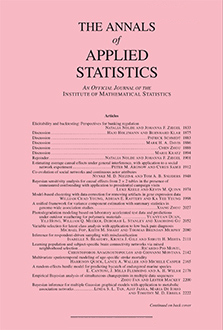Abstract
This paper explores the topic of preferential sampling, specifically situations where monitoring sites in environmental networks are preferentially located by the designers. This means the data arising from such networks may not accurately characterize the spatio-temporal field they intend to monitor. Approaches that have been developed to mitigate the effects of preferential sampling in various contexts are reviewed and, building on these approaches, a general framework for dealing with the effects of preferential sampling in environmental monitoring is proposed. Strategies for implementation are proposed, leading to a method for improving the accuracy of official statistics used to report trends and inform regulatory policy. An essential feature of the method is its capacity to learn the preferential selection process over time and hence to reduce bias in these statistics. Simulation studies suggest dramatic reductions in bias are possible. A case study demonstrates use of the method in assessing the levels of air pollution due to black smoke in the UK over an extended period (1970–1996). In particular, dramatic reductions in the estimates of the number of sites out of compliance are observed.
Citation
James V. Zidek. Gavin Shaddick. Carolyn G. Taylor. "Reducing estimation bias in adaptively changing monitoring networks with preferential site selection." Ann. Appl. Stat. 8 (3) 1640 - 1670, September 2014. https://doi.org/10.1214/14-AOAS745
Information





